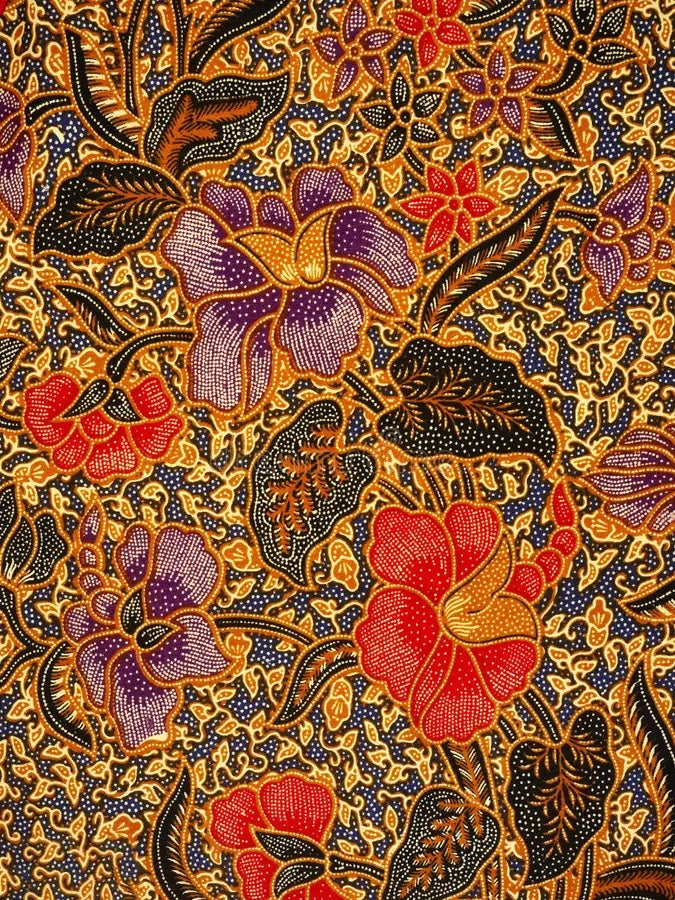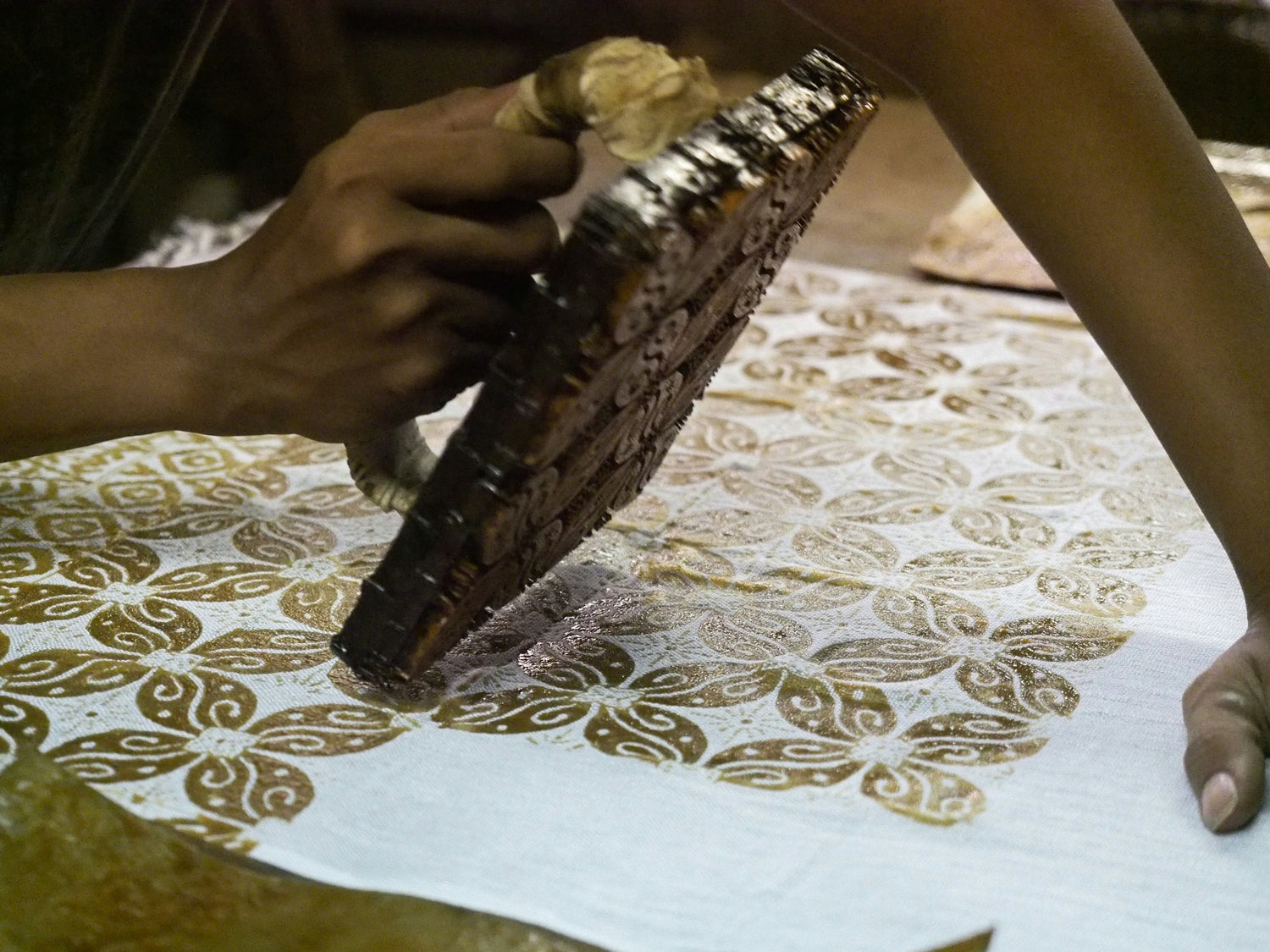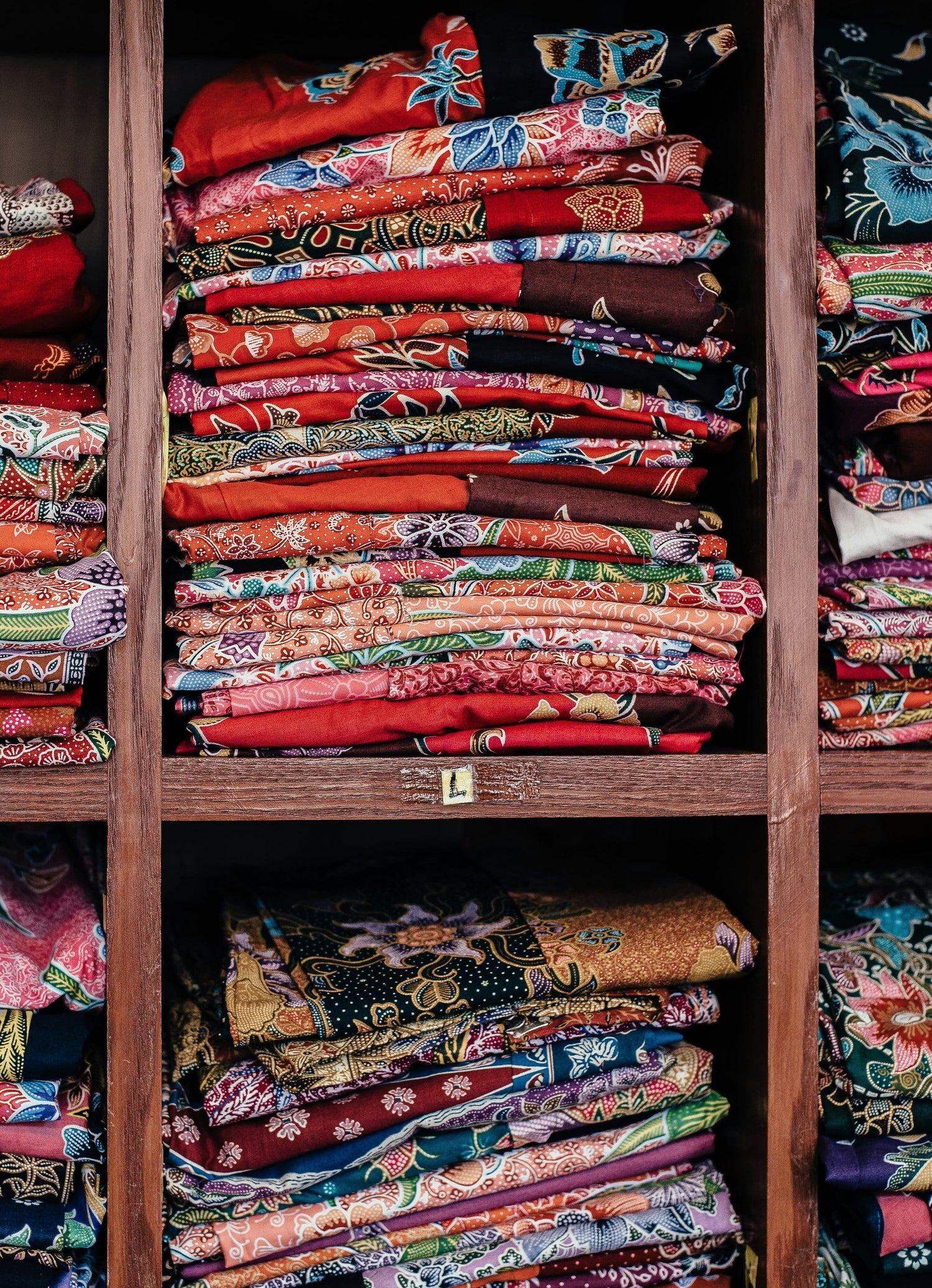
What is Batik?
In essence, Batik is a traditional Indonesian art form of wax-resist dyeing on fabric, representing intricate patterns and designs with cultural significance and international recognition.
There are three main ways of creating Batik:

The Traditional Way: Hand Drawn BAtik
Batik Tulis
Batik Tulis is also known as Written Batik. In this method, the artisans would use a tool called "Canting" to "write" or draw lines with wax in intricate patterns. The applied wax created resistant for the dye, allowing artisans to color selectively by soaking the cloth in one color, removing the wax, and repeating as desired.

Hand Block Batik Print
Batik Cap
Batik Cap, also known as Stamped Batik, is manufactured using a stamp tool. The stamp tool is made of copper plates with motifs on one of the surface. The process after is similar to that of batik tulis: artisan would stamp waxes onto the surface of the fabric, dye the fabric, rinse the wax off and repeat as desired.

Printed Batik
Batik Print
Printing is the modernized process of creating batik. In this process, the fabric is fed through a machine in which a special ink is used to stamp the designed pattern. What's great about this method is it created a more affordable batik for all to use!
More ways of producing Batik
-
Watercolor Batik
This process require water-soluble wax or a special paper that resists watercolor pigments. Artists can freely apply watercolor onto fabric or paper treated with the water-soluble wax, allowing the colors to blend and flow in captivating ways while retaining the distinct crackled effect characteristic of batik. This process offers a versatile approach to creating vivid, multi-layered artworks with stunning visual depth and texture.
-
Tie-dye Batik
Like other tie-dye processes, the fabric is tied or bound in various ways before dyeing to create unique patterns. Batik involves applying wax to fabric before dyeing to create intricate designs. Tie-dye batik combines these techniques, resulting in vibrant, free-flowing patterns with the depth and complexity of traditional batik.
-
Combination Batik
Combination batik is a creative approach that blends various batik techniques to produce intricate and unique designs. By incorporating different techniques, artists can achieve diverse textures, patterns, and color effects within a single piece. Combination batik offers endless possibilities for artistic expression, allowing for the creation of visually stunning and multi-dimensional artworks that seamlessly integrate traditional craftsmanship with contemporary innovation.